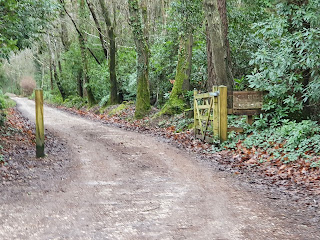Description:
This Wareham Wander is a circular stroll of about 1.75 miles. It is relatively easy walking although there is a messy farmyard to cross so do not wear your best shoes! There is also a bit of a climb uphill at about half way which some may find breath taking but it is not steep.
It is an interesting walk, especially in summer, as it passes through three very different habitats. The first stretch is along a lane with hedgerows on either side with a good variety of flowers and by the farm there is an area of 'waste' ground that is covered in wild flowers too.
At the end of that lane the path heads up between conifers, mainly Scots pine, and with this being dark and quite damp there is a selection of ferns, mosses and lichen as well as fungi in the autumn.
Once on to the road and footpath it changes again and the vegetation is much more aligned to heath and the species associated with dry acid soils. Then the scene changes back to tree line hedgerow.
Anyone wanting a longer walk can take the opportunity to branch off onto other routes at various points of the main route.
The Route:
From the roundabout on the north side of Wareham, just before the railway bridge, take the road down to another roundabout by the station and then onto the Bere Regis road. Almost immediately there is a left hand turning into Carey Approach which soon becomes Carey Road. Pass the shops and stop when you come to the Westminster Road Industrial Estate; there is plenty of road side parking here. Walk back down Carey Road a short way to the entrance to Wessex Oval and follow the route below.
At the top of the hill the route reaches the road at the entrance to Carey House. Turn right here along the road. (Note: This point is the start of my Trigon walk and anyone wanting to lengthen their stroll may want to turn left here. It is also the start of the walk to Carey Heath which is straight across the road along the track ahead of you.)
Natural Interest:
Conclusion:
An undemanding stroll that takes you through three very different natural habitats and it is interesting to compare them, especially in summer.
Notes:
You can see my species list for this walk here: Species list - Carey









Comments
Post a Comment